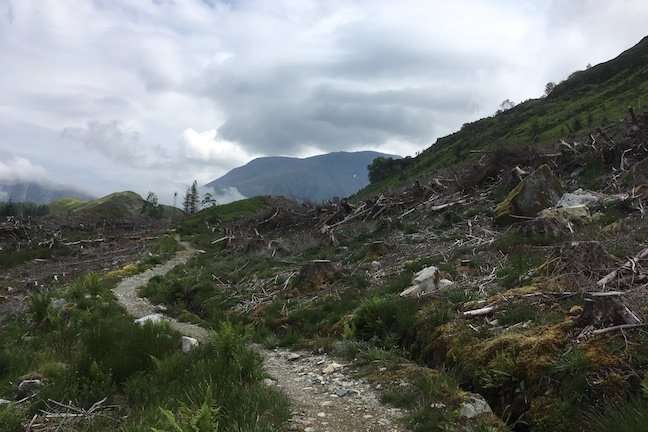Habitat fragmentation can promote disease outbreaks

Fragmentation of landscapes and habitat loss—driven by urbanization and climate change—can put wildlife species at risk of extinction. Some ecological theory suggests habitat fragmentation may be beneficial to wildlife facing disease because populations of sick animals may remain isolated from healthy populations or dispersal might allow healthy animals to escape infection from otherwise sick populations.
A new study surrounding the topic, proposed by University of Minnesota Ph.D. student Lauren White in the College of Biological Sciences; and her advisors, James Forester, College of Food, Agricultural and Natural Resource Sciences, and Meggan Craft, College of Veterinary Medicine, was recently published in the Proceedings of the National Academy of Sciences (PNAS). Its findings run counter to previous disease transmission models' predictions—suggesting that habitat fragmentation may promote disease outbreaks in some scenarios.
The project explores the role of wildlife movement and the idea of "perceptual range," or how far an animal can perceive habitat to be able to decide where and how to move. Scientists do not know much about what determines perceptual range for different species, but perceptual range likely scales with body size. For example, an elephant is expected to have a larger perceptual range than a snail.
"So many wildlife species are under stress from human activities like climate change and urbanization," said White, lead author of the study. "This additional stress can compound the risk of an epidemic doing serious damage to already vulnerable wildlife populations. As we expand our reach into the environment, we are also increasing potential contacts between humans, livestock and wildlife. Consequently, we are at greater risk from zoonotic disease—pathogens that can transmit between animals and humans."
Key findings include:
- A more fragmented habitat always resulted in longer lasting disease outbreaks for simulations with both fewer individuals on the landscape and pathogens with longer infectious periods (i.e., individuals remain sick for longer) and for simulations with more individuals on the landscape and shorter infectious periods.
- In simulations with more individuals on the landscape, longer infectious periods and with animals that could perceive more of their habitat, the way animals navigated their environment changed the relationship between fragmentation and disease outbreak success.
"Understanding how animals move across their landscape is critical to predicting disease outbreaks," said White. "Our model shows small changes in an individual animal's movement can make a big difference."
The findings highlight the potential role of resource hotspots and resource provisioning in altering not only animal movement patterns but also disease transmission. This makes it especially relevant to systems where humans are manipulating or supplementing the availability of food.
Another consideration for management is how humans conserve green space and keep habitat connected for wildlife. Critically, wildlife corridors allow for animal movement, migration and dispersal. However, from a disease control perspective, the study results suggest that the desirable level of habitat connectivity will vary for specific host-pathogen systems.
More information: Lauren A. White et al. Disease outbreak thresholds emerge from interactions between movement behavior, landscape structure, and epidemiology, Proceedings of the National Academy of Sciences (2018). DOI: 10.1073/pnas.1801383115
Journal information: Proceedings of the National Academy of Sciences
Provided by University of Minnesota















